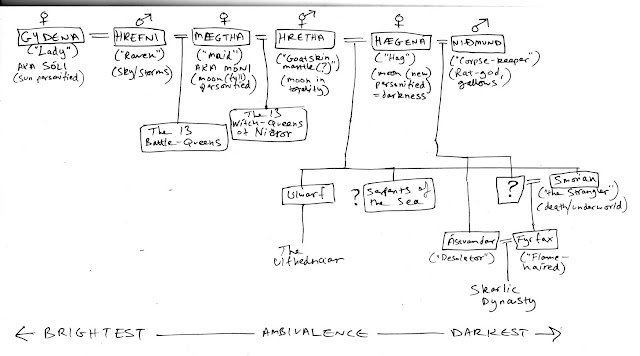The Valkyrie-Diptych Narrative Framework of the 'Saga'
In a work that is devoted to deconstruction , it seems ironic to be writing of a structuralist underpinning to one significant part of the Saga , but it is a framework so obscure that it needs some elucidation, and was written into the narrative as a direct reference to Old Norse and Old English scholarship itself. I came across the theory of the “Valkyrie-diptych narrative structure” in the 2013 paper on the alleged presence of Valkyrie-figures in Old English literature , by Philip A. Purser, which I studied at length last summer and which influenced greatly the writing of the early form of the Saga at that time. Whilst I later took much issue with Purser's interpretations , I was intrigued enough by this narrative framework that it's worth quoting Purser's paper in full: "In 1984, Helen Damico forwards the notion that a type of narrative structure, which gained great currency in twelfth- and thirteenth-century Icelandic and Scandinavian l...

